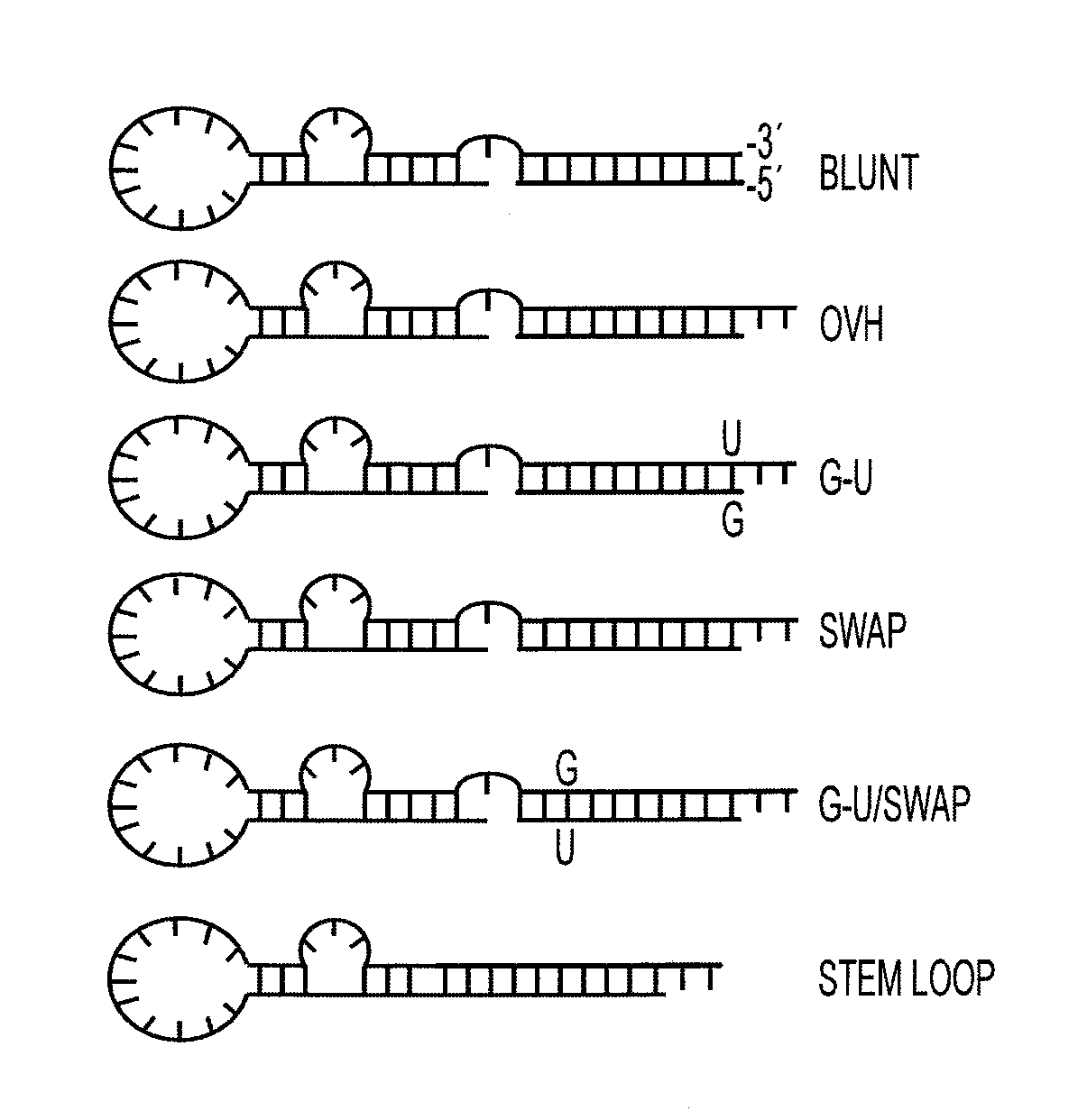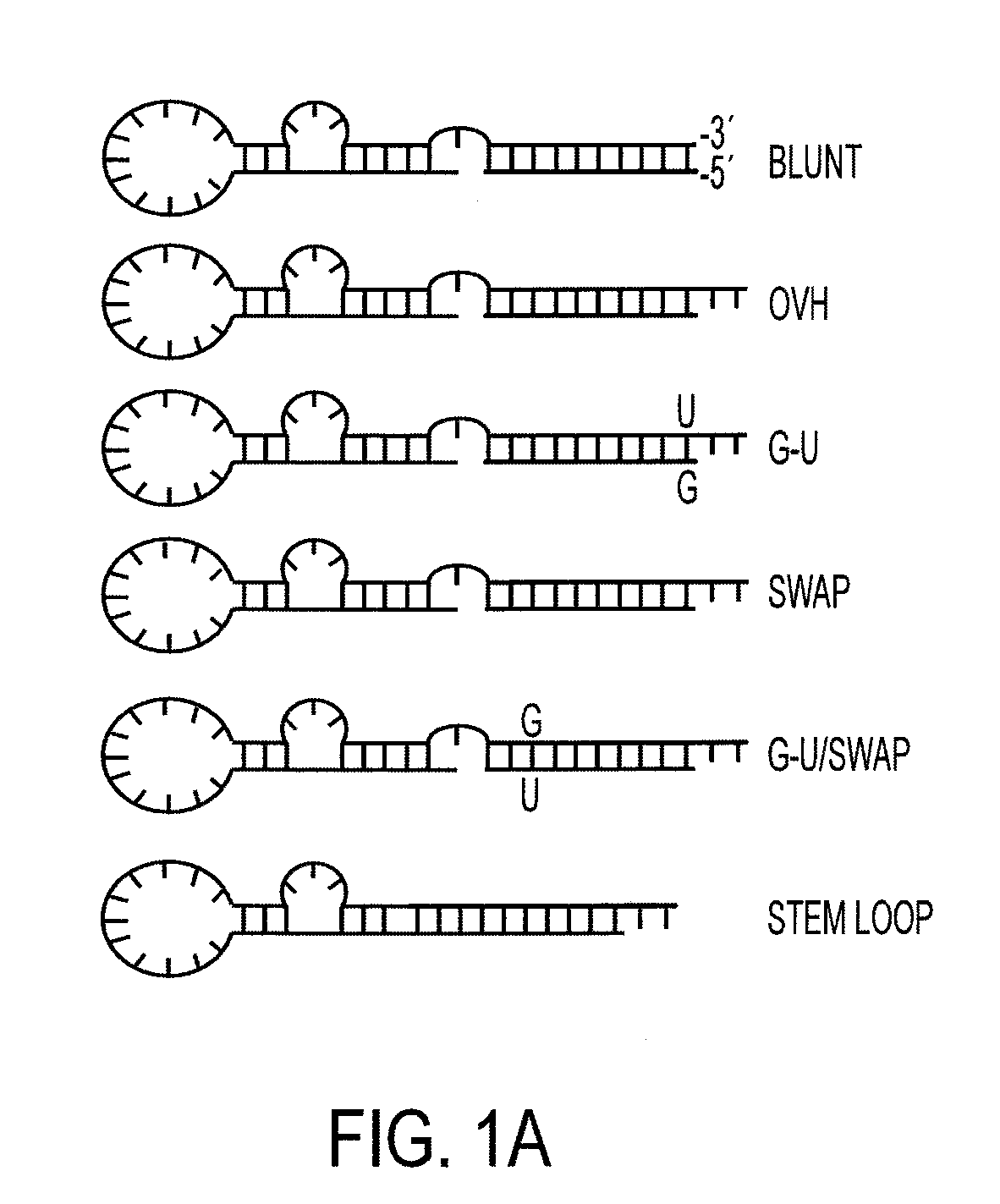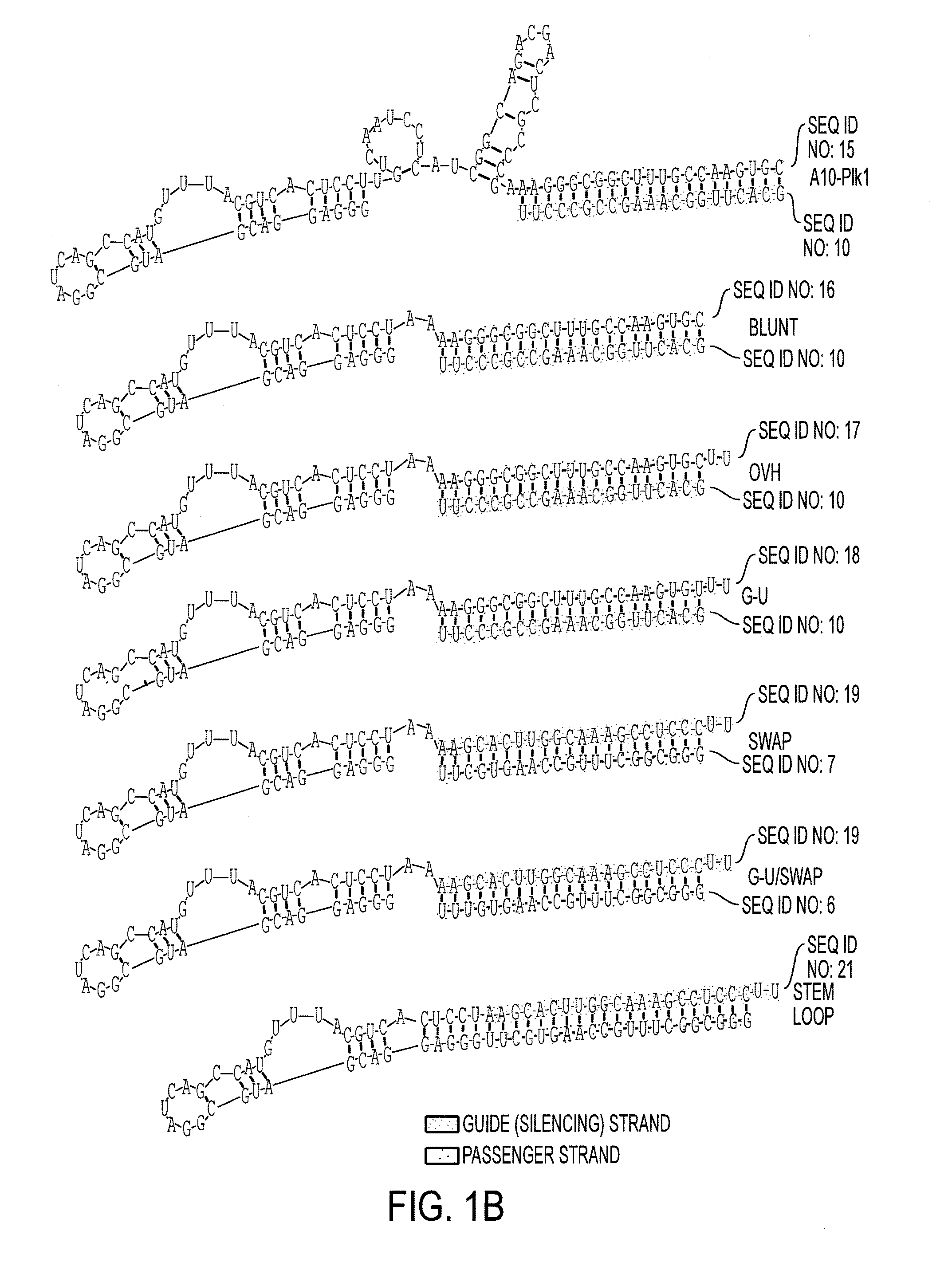Nucleic acid aptamers
a technology aptamers, which is applied in the field of nucleic acid aptamers, can solve the problems of non-specific delivery of sirnas to cells, without regard to cell types, and most of the approaches described to date have the disadvantage of delivering sirnas to cells, so as to reduce, inhibit, or reduce the expression of the target gene, and improve the quality of life. , the effect of reducing the symptom
- Summary
- Abstract
- Description
- Claims
- Application Information
AI Technical Summary
Benefits of technology
Problems solved by technology
Method used
Image
Examples
example 1
Optimization and Systemic Administration of Aptamer-siRNA Chimeras Targeting PSMA-Expressing Prostate Cancers
[0246]Advanced prostate cancer (PC) is a multifactor disease with minimal options for treatment. Current therapies rely on non-specific treatments (e.g., chemotherapies and ionizing radiation), which result in low efficacy and high toxicity to normal tissues. Gene-specific mRNA “knockdown” with synthetic small interfering RNAs (siRNAs) is a potential therapeutic modality for advanced prostate cancer with a number of advantages over alternatives including target specificity, ease of production and the fact that siRNAs can be designed to silence virtually any gene in the human genome. In addition, recent advancements in understanding of the molecular mechanisms of RNA interference (RNAi) enable the rational optimization of the potency, specificity and in vivo activity of siRNAs. However, despite this important progress, delivery of siRNAs to the appropriate target cells in vivo...
PUM
| Property | Measurement | Unit |
|---|---|---|
| molecular weight | aaaaa | aaaaa |
| average molecular weight | aaaaa | aaaaa |
| average molecular weight | aaaaa | aaaaa |
Abstract
Description
Claims
Application Information
 Login to View More
Login to View More - R&D
- Intellectual Property
- Life Sciences
- Materials
- Tech Scout
- Unparalleled Data Quality
- Higher Quality Content
- 60% Fewer Hallucinations
Browse by: Latest US Patents, China's latest patents, Technical Efficacy Thesaurus, Application Domain, Technology Topic, Popular Technical Reports.
© 2025 PatSnap. All rights reserved.Legal|Privacy policy|Modern Slavery Act Transparency Statement|Sitemap|About US| Contact US: help@patsnap.com



